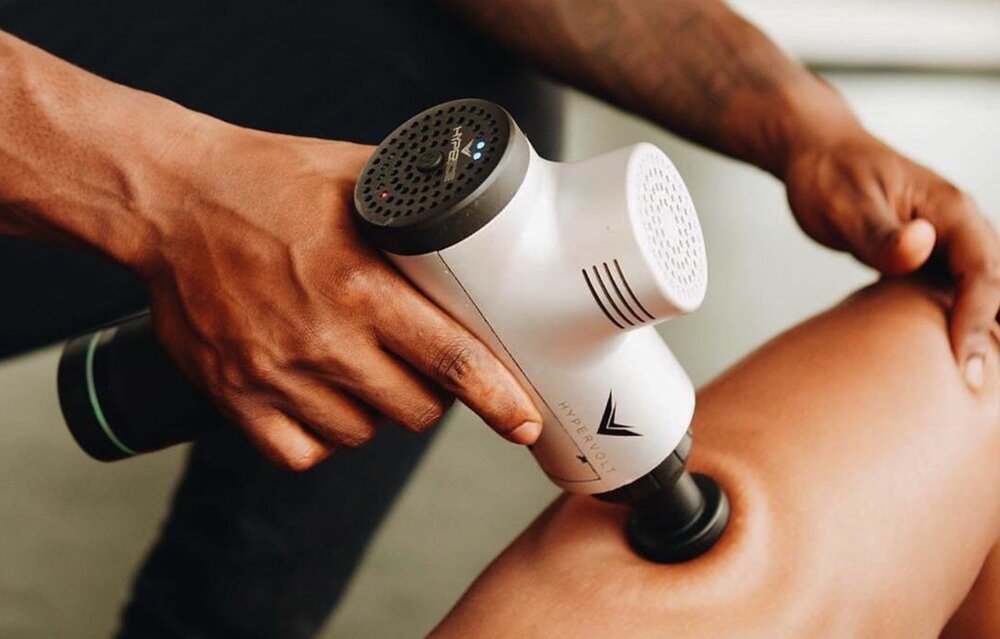The Science Behind Percussive Therapy
Working out helps the body in various ways; it leaves a satisfactory effect, increases the adrenaline, and excites the flow of happy hormones through the veins. However, there is an awful feeling that follows after working out. Your whole body becomes sore and filled with fatigue. All the muscles in the body produce a burning feeling which makes it difficult to tackle simple tasks. The pain and soreness can even last between 24 to 72 hours. That is quite a long time of feeling pain! Fortunately, there is an easier way to manage the pain and continue with your day-to-day routine. You can achieve this by trying percussive therapy.
What You Should Know About Percussive Therapy
If you are familiar with percussive therapy, also known as vibration therapy, then this is no different. It is a massage technique that targets deep tissues using uninterrupted pulses and vibrations. The swift, periodic pressure arouses the muscles and helps reach deeper into the targeted areas of the body, unlike conventional massage therapy.
Proper application of this therapy yields excellent benefits. These include relieving physical complaints such as delayed onset muscle soreness, stress-related conditions, severe injuries, and muscle trauma. Vibration therapy is often a recommendation for rehabilitation, focused on people with spinal cord injuries.
How Percussive Therapy works in the Body
The human circulatory system (arteries, veins, and capillaries) is the main course of passage for hormones, oxygen, and nutrients. So exactly how does percussive therapy work? Percussive therapy delivers essential compounds to the muscles in need. Since it increases blood flow, there is more energy and better performance in the body which aids in speedy recovery.
The central nervous system (brain and spinal cord) as well as other parts in the system work hand in hand to relay and receive pain signals. This process allows you to react to stimuli. Percussion therapy calms the nervous system by masking the pain signals from the affected areas before reaching the brain. It also relaxes the nerves for better sleep.
The therapy is most effective in the musculoskeletal system (muscles, joints, bones, ligaments, tendons, cartilage, and fascia). Here, it aids in breaking up adhesions (stiffened and sticky spots of fascia) by relaxing the fascia to keep it agile. It also kneads overworked muscles until the knots loosen, thereby relieving pain and restoring movement. This therapy also works to decompress the nerves. When nerves are compressed, you feel numbness, tingling, and sharp pain. When massaged, the muscles near the compressed nerve relax and loosen up to provide space for nerve decompressing.
How it differs from Traditional Massage Therapy?
Conventional massaging only offers shallow muscle penetration. What’s more, the human hands are not built to get to the hard-to-reach spots where the problem is. Oftentimes, using hands can be unbearable with all the pain that comes with soreness. On the other hand, with percussive therapy, the surrounding spot of a sore muscle is desensitized by continually shocking the muscle fiber to steadily penetrate the targeted area. This aids in targeting particular muscle soreness without causing more pain.
What are the Benefits?
Percussive therapy is similar to that of vibration, only that the former works to reach 60% deeper into the body muscles. It benefits the body in the following ways;
- It minimizes the pain that comes about with sore and stiff muscles
- It decreases the production of lactic acid in the body
- It improves muscle agility
- It deeply hydrates soft tissue in the muscle
- Minimizes deep-tissue recovery pain
Conclusion
The pain that comes about after working out can discourage other workouts and slow down your daily activities. To prevent that, you should invest in a device that aids in relieving such pain. It is important to know how you recover to find out which device best suits your needs. Massage guns are great devices that not only relax your muscles but also eliminate soreness and pain.
Read more: Learn More About The 3 Different Types Of Felony Charges in Florida

